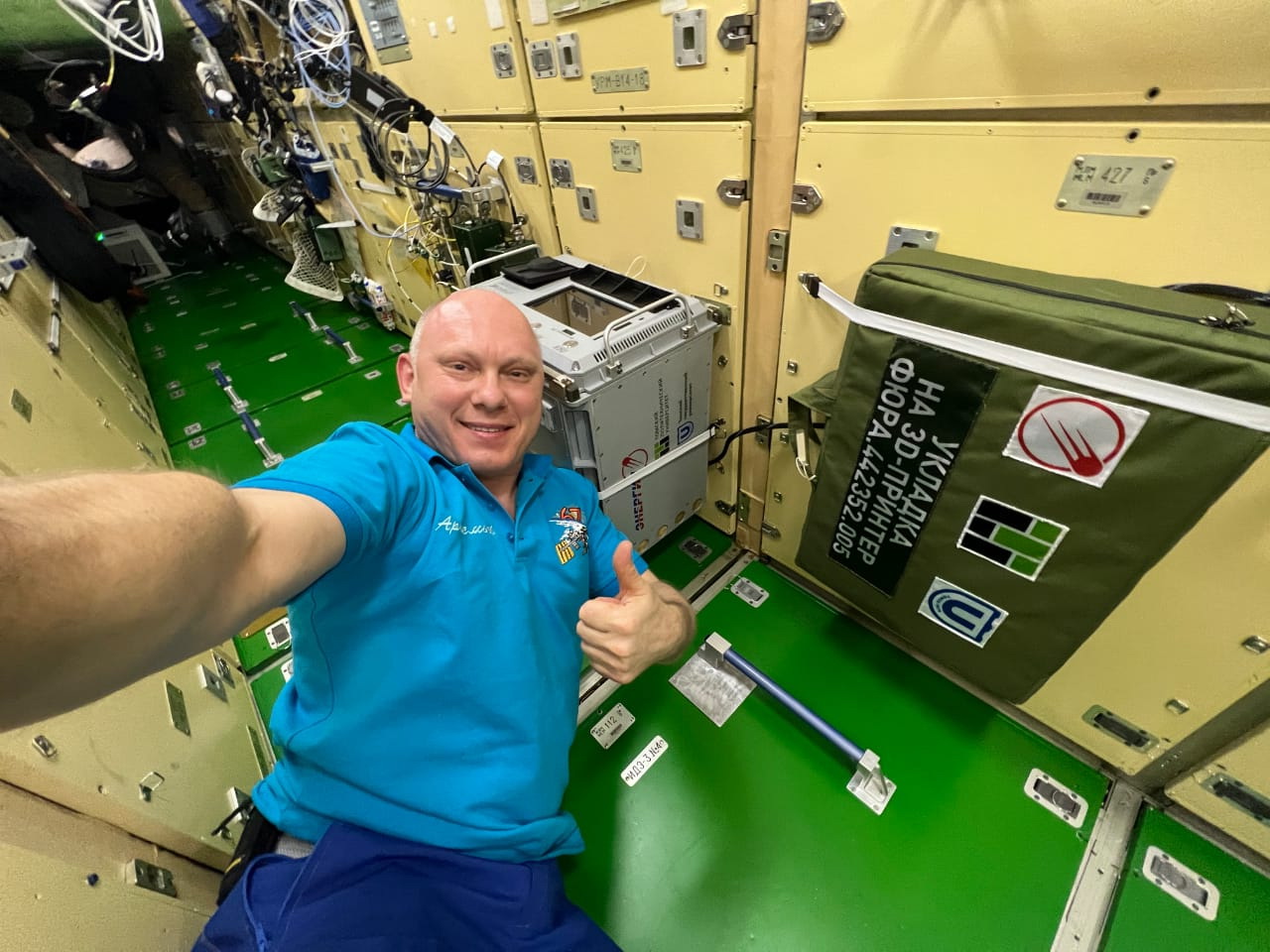A Roscosmos astronaut, Oleg Artemyev, reported on this at a press conference held by the Russian news agency TASS.
"We started printing before the descent. We made 19 different samples, and all turned out well, among them building components and blades. We printed a bust of Gagarin, chess figures, and emblems of universities that participated in this experiment," Artemyev said, specifying that Tomsk State University was among them.
According to the astronaut, they couldn't test the printer at will, since there was no permission to work with the material used for 3D printing. But during the flight, the crew received approval for the use of the material.
"We were able to replicate even the technical side of things. A small component in one of our drills broke, we immediately decided that one of the next samples should be that exact component, and it came in handy when repairing the drill," Artemyev added.
The 3D printer was delivered to the ISS in June for experimental use on the spacecraft Progress MS-20. The experiment is dedicated to developing additive technologies for polymer materials produced in space conditions. In the future, these technologies will enable astronauts in near-Earth orbital stations to manufacture the necessary parts and tools directly, without waiting for their delivery on transport ships from Earth.
Spacecraft Soyuz MS-21 crew members Oleg Artemyev, who was also a TASS special correspondent on the ISS, Denis Matveev, and Sergey Korsakov returned to Earth on September 29. The astronauts have been on the ISS since March 18. Currently, Russian astronauts are undergoing a three-week rehabilitation after the flight at the Zvyozdny Gorodok training center.
For reference: scientists and engineers of TSU, TPU, and the head enterprise for manned astronautics of Russia, Rocket and Space Corporation Energia, worked on creating the country's first 3D space printer for manufacturing components and tools on board the ISS as part of developing the scientific, technical, and educational potential of universities and academic institutes of Tomsk Oblast for solving long-term, targeted challenges faced by the ISS.
Text provided by: TASS.

Photo by: Rocket and Space Corporation Energia






